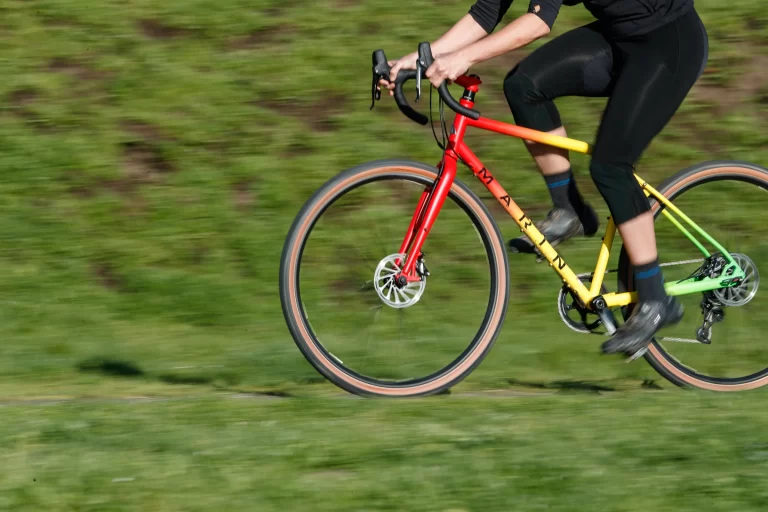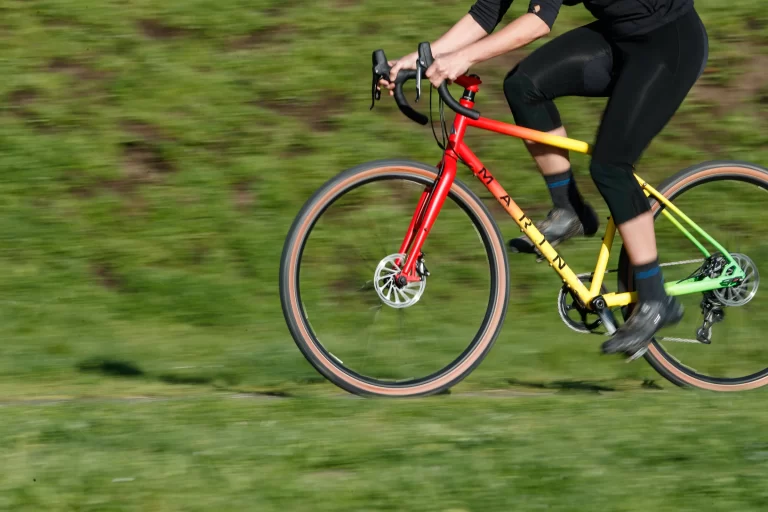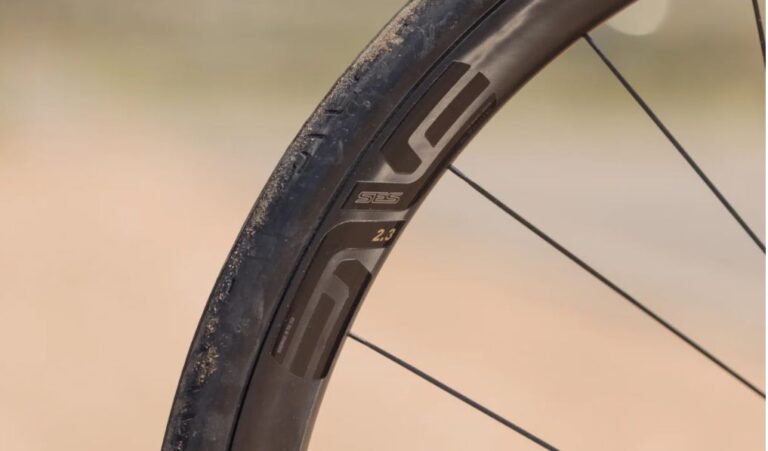Aerodynamics of Mountain Bike Wheels: Unveiling Speed and Trail Performance
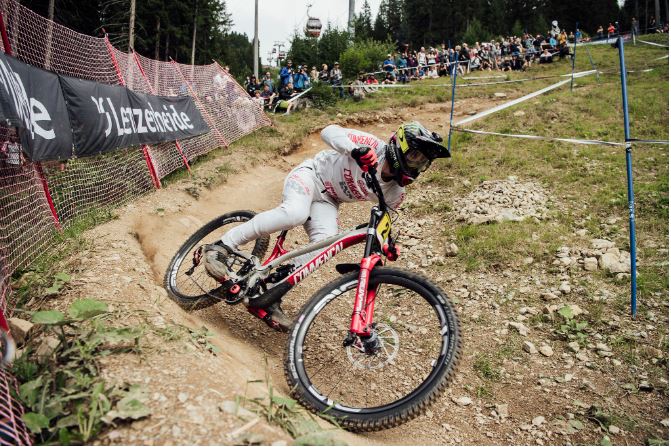
Key Point Summary of Aerodynamics of Mountain Bike Wheels:
- Aerodynamics in the MTB World: While traditionally less emphasized, this aspect play a role in reducing drag and enhancing speed, particularly in XC racing or on smoother trails.
- Wheel Design and Shape: The design, including rim depth and shape, influences aerodynamic efficiency, with wider rims and specific profiles offering better airflow.
- Material and Weight Considerations: The choice of material impacts indirectly through weight and rigidity, affecting acceleration and maneuverability.
- Impact on Trail Performance: Aerodynamic wheels can contribute to improved performance on climbs and flat sections, offering a speed advantage in certain conditions.
In my years of cycling, transitioning from the adrenaline-fueled world of mountain biking to the strategic pacing of gravel rides and the mud-splattered chaos of cyclocross, I’ve developed a deep appreciation for the nuances of bike technology. Among these, the aerodynamics of mountain bike (MTB) wheels stands out as a fascinating topic. Often overshadowed by their more conspicuous road bike counterparts, the aerodynamic aspects of MTB wheels hold subtle yet significant impacts on speed and trail performance.
Aerodynamics of Mountain Bike Wheels: Diving Into the Aerodynamic Vortex
When we talk about mountain biking, the conversation often veers toward grip, suspension, and durability. However, the aerodynamics of MTB wheels, though more subtle, play a crucial role in trail performance and efficiency. Unlike the high-speed, smooth asphalt of road racing where aerodynamics can make or break a race, mountain biking presents a more complex interplay of factors. Yet, at the heart of this complexity lies the undeniable truth: reducing drag improves speed.

Wheel Design: More Than Meets the Eye
The evolution of MTB wheel design has seen a gradual incorporation of aerodynamic principles. Initially, aerodynamics took a back seat to durability and traction. However, as the sport has evolved, so too has the understanding of how even marginal gains in aerodynamics can benefit a rider’s performance, especially in cross-country (XC) racing or on less technical, faster segments of a trail.
The move towards wider rims in recent years isn’t just about improving tire support and traction; it also has aerodynamic implications. A wider rim can provide a smoother airflow around the wheel, reducing drag. Additionally, the rim’s profile—whether it’s more rounded or has a sharper edge—can affect how air flows over the wheel, further influencing aerodynamic efficiency.
Material Matters: The Interplay with Aerodynamics
Traditionally, mountain bike wheels have been built to withstand the rigors of off-road riding. The choice between aluminum and carbon fiber, while often discussed in the context of weight and durability, also has aerodynamic implications.
Carbon wheels, in particular, can be molded into shapes that optimize airflow, offering an aerodynamic edge. However, the primary aerodynamic benefit of lighter materials like carbon comes from their impact on acceleration and climbing efficiency, where reduced rotational mass allows for quicker speed changes.
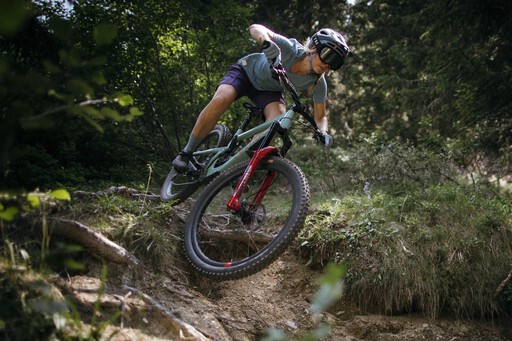
On the Trail: Where Speed Meets Dirt
In the real world of roots, rocks, and mud, the aerodynamic advantages of MTB wheels manifest most noticeably on climbs and smoother, faster sections where maintaining speed is crucial. On technical descents or tight, twisty singletrack, the benefits are less pronounced, overshadowed by the need for precise control and maneuverability. However, for the racer or the rider aiming to shave seconds off a climb or maintain a higher average speed across a rolling XC course, aerodynamically optimized wheels can provide a noticeable performance boost.
Conclusion: The Wind in Your Spokes
As mountain biking continues to evolve, so too does the appreciation for all factors that contribute to performance, including the once-overlooked aspect of wheel aerodynamics. While never the sole determinant of success on the trail, understanding and optimizing the aerodynamic properties of MTB wheels can offer riders at all levels an edge in their quest for speed and efficiency.
Here’s a concise overview of mountain bike wheels:
- DT Swiss EXC 1200 Spline – Ideal for enduro riders, these wheels strike an excellent balance between weight and stability. DT Swiss is known for its precision engineering, and the EXC 1200 Spline wheels are no exception, offering remarkable durability and performance on technical terrains.
- Shimano XTR M9100 – Shimano’s flagship mountain bike wheelset offers superb reliability and performance. The XTR M9100 series is designed for cross-country and marathon riding, featuring lightweight construction and a responsive feel that competitive riders will appreciate.
- Zipp 3ZERO MOTO – Zipp’s unique approach to mountain bike wheels, with a single-wall design, allows for a ride that’s both compliant and stable on rough trails. The 3ZERO MOTO wheels are particularly suited for aggressive trail and enduro riders who demand the utmost in traction and control.
- Industry Nine Enduro 305 – Known for their striking aesthetics and customizability, Industry Nine wheels also pack a punch in terms of performance. The Enduro 305 wheels are robust, with a focus on enduro and aggressive trail riding, offering excellent strength and responsiveness.

FAQ
What is the physics behind bicycle wheels?
The physics behind bicycle wheels involves several key principles:
- Rotational Inertia: A bicycle wheel’s mass distribution affects how easily it starts and stops spinning. Wheels with most of their mass concentrated near the rim have higher rotational inertia, making them harder to accelerate but maintaining speed more effectively once spinning.
- Gyroscopic Effect: As a bicycle wheel spins, it creates a gyroscopic effect, stabilizing the bicycle laterally (side to side). This effect increases with the wheel’s rotational speed, contributing to the stability of the bike at higher speeds.
- Spoke Tension: The tension in the spokes supports the rider’s weight, distributes stresses evenly, and maintains the wheel’s shape. Properly tensioned spokes are crucial for the wheel’s strength and durability.
- Aerodynamics: The shape and design of a bicycle wheel affect its aerodynamic efficiency. Thinner rims and fewer spokes reduce air resistance, allowing for faster speeds with less effort, especially at higher speeds.
These principles work together to influence a bicycle’s performance, handling, and efficiency, making wheel design a critical aspect of bike engineering and rider experience.
Happy Trail Riding!
John

